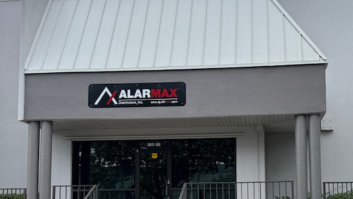
The Buzz: Installation Spotlight: Advanced Mass-notification System, Arlington County and City of Alexandria, Va.
Nov 1, 2007 12:00 PM,
By Charles Conte
Emergency Response
Web-expanded sidebar

The County of Arlington, Va., and the City of Alexandria tested part of their pilot program outdoor emergency warning system on the streets of Alexandria on May 18, 2007. The outdoor warning system is from MadahCom, and it is integrated into Arlington’s emergency warning systems. MadahCom chose CJ46 horns from Atlas Sound as best suited for three fixed tower locations, out of 10 tower
locations in the program.
The Sept. 11 tragedy, hurricanes Katrina and Rita, and the recent Southern California wildfires suggest that there may very well be a need for a loudspeaker broadcast system to reach people who might not receive emergency warnings from other sources. This is the premise that Arlington County, Va., and the City of Alexandria have been testing in recent months in a pilot program that Arlington is managing on behalf of the National Capital Region.
The outdoor warning system is from MadahCom of Sarasota, Fla., an established supplier of mass-notification systems to the U.S. government. The outdoor warning system is one component of the region’s integrated indoor and outdoor warning system, known as MadahCom’s Wireless Audio Visual Emergency System (WAVES), and it will supplement the region’s many other emergency-notification systems.
OUTDOOR DEMONSTRATION
The most recent demonstration of the system in May of this year involved five loudspeaker tower locations out of 10 locations in the pilot program.
“Three of these locations have six horns in various stacking options,” says Alan Avidan, senior VP of MadahCom. “These were the more ‘urban canyon’-style locations, and required more directivity control of the loudspeakers.”
MadahCom chose the wide-dispersion CJ46 reflex sound horn from Atlas Sound for its “nice combination of directivity pattern control, good fidelity, and price,” according to Avidan. The other seven tower locations in the program have MadahCom omnidirectional loudspeakers. The system can be tested silently as well, without disturbing residents.
“Installing a system in the middle of a busy urban area required good coordination and caution,” Avidan says. “Arlington County and the City of Alexandria provided excellent assistance.” Selecting the exact loudspeaker array type and location that would work best with the acoustic environment required expertise that both MadahCom and John Fuoto (consultant to Arlington County) provided with excellent results. MadahCom RF engineers worked hard to overcome some terrain difficulties. Cooperation from both the county and private institutions was a necessity for the sake of improving the safety of Arlington County’s and Alexandria’s citizens and visitors.
The National Capital Region’s emergency managers wanted to see how effective the outdoor warning system was in reaching people who are away from television, radio, computers, and telephones and do not have mobile devices, as well as people in transit, attending outdoor special events, or visiting the National Capital Region. Sound tests by Arlington County’s emergency managers (performed on May 18) indicated intelligible sound reproduction from tower speakers, Avidan says, with some fluctuations as the result of transient ambient noise such as aircraft and buses. “Test listeners reported hearing the alerting tone and the test messages quite clearly,” he says. Both random word sequences and coherent sentences were played in English and in Spanish. A group of volunteers spread around the county recorded the results.
“We have a robust ‘system of systems,’” says Robert Griffin, director of Arlington’s Office of Emergency Management (OEM), “including Arlington Alert [which sends emergency alerts and notifications to participants by email and text and voice messages] and 1700AM Arlington [an emergency radio station], that allows us to get important information quickly to those who live and work here, as well as visit.”
The WAVES system can be activated in specific neighborhoods only, enabling police to help look for a lost child, for example. “This outdoor warning system is another important tool in our emergency communications arsenal,” Griffin says.
The Buzz: Installation Spotlight: Advanced Mass-notification System, Arlington County and City of Alexandria, Va.
Nov 1, 2007 12:00 PM,
By Charles Conte
Emergency Response

MadahCom’s Mobile High-powered Speaker Array is a portable field-notification unit for tactical operation, forward-unit deployments, disaster management, and other temporary needs. The portable unit can operate as a standalone alerting system and autonomously controlled (local keyable micro-phone) or be integrated with a TACWAVES portable alerting system or with a permanent WAVES system.
WAVES
Selected by Arlington County and the City of Alexandria on behalf of the National Capital Region pilot, the WAVES Mass Notification System (MNS) includes the following components: Outdoor (Giant Voice) Warning Systems, Individual Building Notification Systems, and Portable Alerting Systems.
WAVES itself consists of primary control stations; a digital wireless communications system; audible and visual notification devices (including fixed and mobile high-powered loudspeaker towers); and indoor alerting systems integrated into a building’s existing fire alarm system.
A WAVES Integrated Base Station (IBS-001) command-and-control unit is installed both in the Arlington OEM and the Alexandria OEM — the primary control stations integrated into one seamless system for a regional alerting system.
MadahCom also supplied its field transceiver units (TRX-401) for an indoor system that allows the WAVES Integrated Base Station to send messages to the existing indoor fire alarm panels, as well as tie the indoor and outdoor systems together. Field transceiver units — fully integrated with a power supply, audio amplifiers, and diversity antenna — function as the audio and data input/output node in the WAVES network. Each unit receives and transmits digital signals to and from other units, thereby extending the reach of the network to cover all areas of interest.
The WAVES communication network is based on MadahCom’s proprietary digital Frequency Hopping Spread Spectrum (FHSS) technology, operating at 2.4GHz, a robust communication network with anti-jamming capabilities and immunity to interference, eavesdropping, and spoofing approved for use in military and government facilities. “Spoofing is perhaps the emergency manager’s biggest nightmare when it comes to public alerting systems,” Avidan says. “If an intruder can issue false messages by ‘hijacking’ the system, grave consequences can ensue.”
The WAVES Integrated Base Stations, as well as the system’s loudspeaker towers, are protected by uninterruptible power supplies (UPS), providing backup power in the event of a grid power loss. The mobile loudspeaker towers also include a generator and solar panels for backup power.
OUTDOOR AND INDOOR WARNING SYSTEMS
Arlington’s and Alexandria’s Outdoor (Giant Voice) Warning System consists of fixed and mobile loudspeaker towers that broadcast live and recorded voice messages, tones, and sirens. WAVES high-powered Speaker Towers (SPT-2117) need to cover a large area with crisp, intelligible warnings. Tower loudspeakers are mounted near the top of utility poles. Three of the six SPT-2117s in the Arlington system are topped with Atlas multihorn configurations.
The mobile speaker towers (MSPT-2117), easy to move and relocate, can be rapidly deployed before, during, and after a disaster. Arlington and Alexandria each have one of these mobile speaker towers, which can operate as standalone alerting systems or be integrated into the permanent WAVES MNS.
At the Hilton Garden Inn, Arlington Courthouse Plaza, a WAVES transceiver is installed and integrated with an existing fire alarm panel, allowing the OEMs to activate the panel from the WAVES IBS to broadcast messages to the interior building.
Sometimes threats encompass entire regions. As part of the Arlington/Alexandria pilot project, MadahCom’s WAVES communicates with multiple local, geographically separated MNS sites located in the National Capital Region for a broader, regionally controlled system. The WAVES Regional Alerting System provides remote access to and control of numerous WAVES MNS from a primary location such as a regional OEM or remotely via a laptop computer with Internet access for wide-area coverage and a coordinated alerting and monitoring environment. These systems are expandable to essentially any scale.
While the possibility always exists for a regional threat requiring the issue of a widespread warning, the possibility for more localized threats exists also. The Arlington and Alexandria systems allow the OEMs to send the right message to the right person by using zones and subzones without causing panic or disturbing individuals unaffected by the threat.
On July 4, 2007, the Arlington system was put to use when Arlington County emergency managers received warnings that storms and heavy hail were spreading to the county. With thousands of people gathered on the National Mall to watch a fireworks display across the Potomac river from Washington, D.C., the emergency managers used MadahCom’s Mobile Speaker Tower at the Iwo Jima memorials to help evacuate residents who were there to watch the fireworks display. Using the WAVES portable loudspeaker tower, emergency managers issued announcements advising people to seek shelter and avoid trees. The crowd dispersed quickly, the emergency warning system making its point loud and clear.
Pilot Program Background
The federally funded $400,000 pilot program is authorized by the Emergency Preparedness Council of the Metropolitan Washington Council of Governments. The pilot program will test the system’s effectiveness in an urban environment (high rise buildings, etc) as well as park settings, as well as test the system’s ability to expand to a city-wide scale.
Arlington County’s Office of Emergency Management (OEM), in partnership with the City of Alexandria’s Office of Emergency Management, was selected under a federal grant from the Department of Homeland Security to manage the pilot test and are the first jurisdictions in the region to install this type of alerting system.
Originally part of the “10-mile square” parcel of land surveyed in 1791 to be the Nation’s Capital, Arlington is home to some of the most influential organizations in the world — including the Pentagon.
SUBSCRIBE TO SOUND & VIDEO CONTRACTOR E-NEWSLETTERS!
- Sound & Video Contractor EXTRA
Systems Integration Special Focus series:
- Houses of Worship
- Corporate AV
- Residential AV
- AV Over Fiber
- AV in Education
Breaking industry news in your email inbox every other week!
Subscribe atwww.svconline.com










